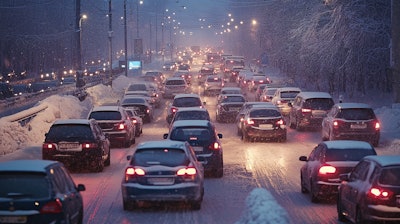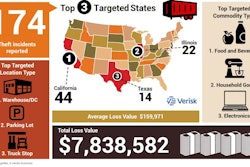
If your driving has you on the road during the upcoming holidays, expect to have plenty of company as some 107 million people are expected to travel to their holiday destinations by car.
AAA projects a total of 119.3 million people will travel 50 miles or more from home over the year-end holiday period from Saturday, Dec. 21 to Wednesday, Jan. 1. This year’s domestic travel projection narrowly surpasses the previous record set in 2019 by 64,000 travelers. AAA expects an additional 3 million travelers this holiday season compared to last year.
“This is the time of year when lifelong memories are made with loved ones, and travel plays a big role in that,” said Stacey Barber, Vice President of AAA Travel. “This year, with Christmas Day falling on a Wednesday, we’re anticipating record-breaking travel numbers the weekend before and the weekend after the holiday.”
Nearly 90% of holiday travelers will be driving to their destinations, making it the most popular way to travel. Some 107 million people are expected to travel by car, according to AAA, and while that number is 2.5 million higher than last year, it’s shy of 2019’s record of 108 million.
This holiday season, gas prices are lower than last year, when the national average was around $3.12 in the last two weeks of 2023. Gas demand in December goes down as the weather gets colder, more people work remotely, and holiday shoppers purchase their gifts online versus in person.
INRIX, a provider of transportation data and insights, expects drivers will experience the worst traffic delays the weekends before Christmas Day and New Year’s Day. The holidays themselves are expected to have minimal congestion. Drivers in Boston, New York City, Seattle, and Washington, DC could see double the typical delays. Nationwide, travel times could be up to 30% longer.
“With a near record number of auto travelers expected this holiday season, drivers should expect delays in and around major metro areas, with Sunday, Dec. 22 expected to be the nation’s worst day to travel,” says Bob Pishue, transportation analyst at INRIX. “Our advice is to avoid traveling during peak commuting hours during the week. If schedules allow, leave bright and early or after the evening commute.”
For this forecast, the year-end holiday travel period is defined as the twelve-day period from Saturday, Dec. 21 to Wednesday, Jan. 1. AAA’s year-end holiday travel period can range from 10 to 13 days, depending on which day of the week Christmas and New Year’s Day fall. This year’s holiday travel period is two days longer than last year. While a longer holiday travel period can offer more options for departures and return trips, all the year-end holiday periods contain two weekends.











